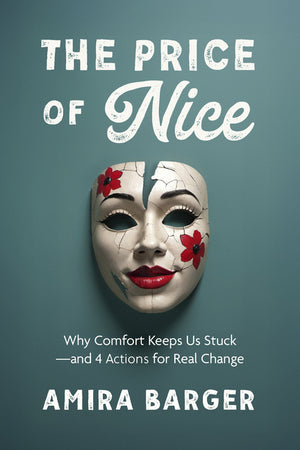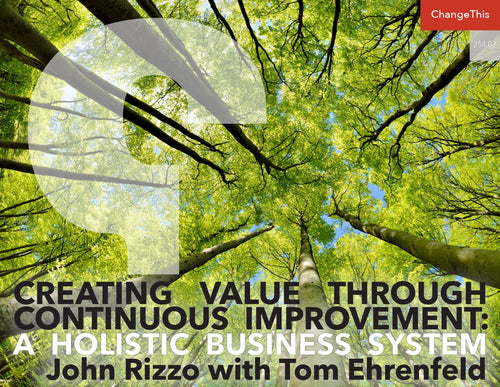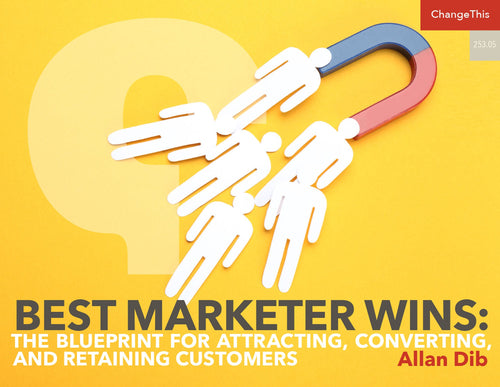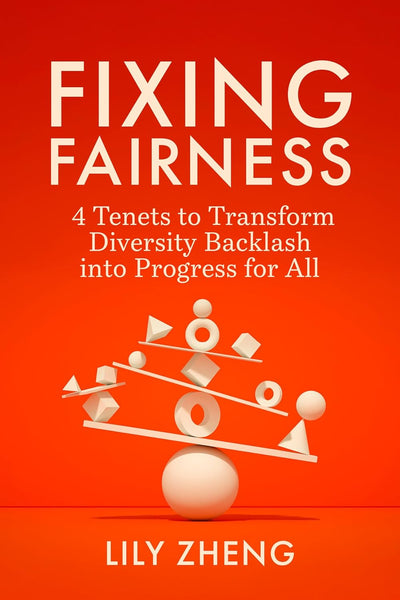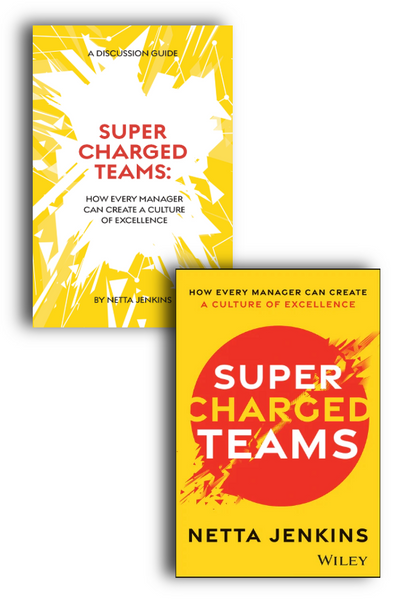Have the Nerve Not to Be Nice: Challenge Norms, Confront Discomfort, and Push for Transformation
Amira Barger was raised, like most of us, believing that being nice was a good thing. She has discovered that there is a price to being nice, and that this cost is borne not just by us, but by society as a whole. Recognizing this, Barger calls on us to have the nerve to change.

“It costs nothing to be nice.”
What a travesty of logic!
In context, that phrase usually means “Don’t be a jerk.” It can be used to call out bad behavior or praise someone for basic decency. On the surface, being nice seems like an innocent, even admirable quality—a balm that soothes social interactions. But niceness often hides more profound problems. It’s a learned behavior meant to keep things comfortable, avoid conflict, and preserve the existing order.
The truth is more complicated: It costs a great deal to be nice.
I’m not suggesting we throw human decency out the window; no one likes an asshole. Instead, I want us to examine niceness as a social construct, not a natural or inherent truth—as one of many collectively agreed-upon ideas that shape our behaviors, relationships, and institutions. You see, despite their artificial origins, social constructs carry very real consequences.1
Social constructs you may be more familiar with include race, gender roles, and the value of money. But unlike these more readily identifiable systems, niceness operates unnoticed. It exists as the default, the norm, the presumed state of acceptable behavior. More insidiously, because niceness is framed as a virtue, it is rarely scrutinized, escaping the accountability and critique it urgently requires. Instead, it becomes a cloak we gladly wrap ourselves in for the fleeting comfort of achieving acceptance.
Seemingly well-intentioned goals like “keeping the peace” and “trying to get along” obscure how niceness upholds the status quo, justifying our subconscious self-betrayal and permitting us to avoid uncomfortable truths. Like Harry Potter sneaking through Hogwarts undetected, sidestepping explicit acknowledgment of how niceness maintains compliance preserves its role as a tool for perpetuating comfort over change, appearances over authenticity, and false peace over meaningful progress.
Niceness, left unchecked, is a mechanism of control that replicates itself and reinforces the systems that thrive on its presence. In fact, precisely because it is allowed to operate without scrutiny despite the myriad ways it contributes to harm, niceness may be one of the most vicious social constructs, subtly enabling systems of oppression to persist.
It’s time to name it, confront it, and demand more from ourselves and the world around us. To chart a path forward, we must first understand how we arrived at this critical turning point.
DO YOU UNDERSTAND THE WORDS THAT ARE COMING OUT OF MY MOUTH?!?
Let’s start with a few definitions. Everyone’s experiences shape how they interpret the world and the language they use. Assuming shared understanding can lead to miscommunication, confusion, and disrupted collaboration—especially given the quirks of the English language.
Consider two terms that anchor my premise: nice and nerve. While it may not be obvious at first glance, these two familiar words actually represent starkly different approaches to navigating the world—one preserves the current norms, the other drives real change.
Nice
According to Merriam-Webster, some definitions of nice are polite, kind; pleasing, agreeable; appropriate, fitting; well-executed.2 On the surface, “nice” seems downright delightful. After all, who doesn’t prefer to be around polite and agreeable people? However, as I touched on briefly a moment ago, for the purposes of this book, we are not addressing nice from this defined vantage point, but as a social construct. You mustn’t conflate or confuse the two. Nice—when prioritized above all else—is a trap. It can lead to
- Avoiding difficult conversations to preserve a false sense of peace
- Tolerating harmful behavior because confronting it feels uncomfortable
- Masking systemic injustices under a veneer of politeness
Nice emphasizes how things feel rather than how they are. While it soothes in the short term, it stifles growth, silences dissent, and upholds the current state of affairs in the long run.
Nerve
I propose that the opposite of “nice” is not “mean.” Instead, I think of the antithesis of “nice” as “nerve.” Nerve has a wide range of definitions, from the physical receptors in the human body that send signals to our brains to feelings of agitation or irritability (such as when someone “gets on your nerves”). We will focus on this term as it relates to power of endurance or control; fortitude, strength; assurance, boldness; audacity.3
Having nerve says “This is where I draw the line” and honors your emotional boundaries even when others don’t. It’s about standing firm in your beliefs and protecting your well-being or the well-being of others, even if doing so requires burning bridges. Unlike nice, which seeks to avoid discomfort, nerve leans into it, acknowledging that growth, justice, and transformation often require us to be uncomfortable—and even to make others uncomfortable. Nerve is
- Speaking up when silence feels safer
- Challenging the status quo even at the cost of relationships or personal gain
- Holding boundaries and advocating for opportunity despite criticism or misunderstanding
Nerve is about resilience and the willingness to act when it matters most. Where nice prioritizes agreeability, nerve disrupts. Choosing between nice and nerve isn’t only about personal values or professional strategies. It’s about the world are building—or failing to build—for future generations.
I remind my daughter, before moments of challenge, “Get your butterflies in formation.” It’s my way of acknowledging that being anxious is natural, but it’s also a reminder to harness that energy into action. Having the nerve to demand change is not about being fearless—it’s about feeling the fear and showing up anyway. It’s a call to let those fluttering butterflies guide us into the spaces that most need disruption. These small but powerful moments shape how she learns to navigate the world, with all its unspoken rules and unjust systems.
When we spread our wings, we create currents that lift others, making it easier for them to rise. The journey will be nerve-racking, but it’s one we must take—individually and collectively— to inspire a future where everyone can take flight.
CENTERING THE MARGINS FOR COLLECTIVE GOOD
There is a foundational mental model we must keep in mind: When we solve for those most at the margins, we solve for everyone. Inspired by a lecture by American lawyer and activist Mari Matsuda,4 it is at the core of my work and worldview. Matsuda affirms that centering the most marginalized is the path to collective progress. That’s why change must begin at the edges, by elevating those most often overlooked, and ripple inward to transform the whole—because the most marginalized hold the truths and needs that should shape the center.
Malcolm X once famously stated that Black women are the most disrespected, unprotected, and neglected people in society.5 Nothing in my experience has led me to believe that this observation does not ring true to this day. So, given that understanding, when we work to meet the needs of Black women, for example, we create change that ripples outward, empowering entire communities and creating a better world for everyone. Of course (I feel compelled to clarify), this concept is not exclusive to Black women, but will change depending on the context. Lord knows there’s enough discrimination to go around.
Some will undoubtedly resist this idea, misbelieving that focusing on any marginalized population means disregarding everyone else. Nothing could be further from the truth. The push for change is not about exclusion or taking resources away from others. This is not a matter of “affirmative action,” but rather takes inspiration from nature. In a forest ecosystem, trees are connected through shared roots. Older, stronger, more established trees will redirect resources to support younger, growing trees or those in need, thereby nurturing the whole forest. Similarly, when we center the needs of those who are often overlooked or underserved, we cultivate an environment that strengthens everyone, improving resilience and well-being across the board.
WORDS AS TOOLS—OR AS WEAPONS
Why take the time to worry about this? Because words matter. Words are not passive or inert; they carry histories that shape meaning and influence how we understand the world. For example, do you know where the word “bikini” comes from? While most people associate it with two-piece swimwear, that name originates from Bikini Atoll, a Pacific island where the United States conducted tests for the atomic bomb, causing significant destruction and displacing the island’s inhabitants.6 French designer Louis Réard then took the name for his swimwear, with the idea that the revealing nature of his design was as explosive as the nuclear tests—which is its own special brand of disturbing.
Over time, the word’s connection to these devastating origins has been nearly erased, replaced by images of carefree summer days at the beach. This illustrates how language can obscure deeper truths, sanitizing the legacies of harm it carries. Words mold our perceptions, frame how we understand the world, and influence what actions we believe are possible (or impossible). The stories we tell, the language we use, and even the silences we maintain form the foundation of our social, cultural, and institutional systems.
The Conditioning Matrix (Figure 1) is a visual framework I’ve created that reveals the layered forces that shape our default leaning toward “nice” (and discourage the boldness of “nerve”). It maps the inputs that reinforce compliance, silence, and likability on an individual, interpersonal, and institutional scale, ultimately conditioning us to value comfort over courage.
Nice is not neutral—it is often a survival strategy, a performance, a learned behavior that’s been rewarded, expected, and internalized across every level of society. The Conditioning Matrix invites us to look beyond personality traits and into power structures: to question who benefits when we stay quiet, agreeable, or small.

By naming these influences clearly, we gain language and awareness to challenge them. This tool is not about shame—it’s about clarity. It’s about recognizing the cost of niceness and reclaiming the courage of nerve as a more honest, values-driven way of being. Use this matrix to interrogate your own conditioning, reflect on the roles you’ve been asked to play, and begin the journey of choosing alignment over approval.
THE POWER OF WORDS
Words carry weight and consequences—they are never “just” words. Words drive action or inaction, their meanings evolving based on how they’re used and who controls the narrative. Wielded purposefully, words can build understanding, inspire progress, and foster connection. They can heal, bringing lucidity and reconciliation. But in the wrong hands, they can manipulate and cause harm, wielded as weapons to maintain power or perpetuate injustice. That old saying, “Sticks and stones may break my bones, but words will never hurt me”? Grade-A bullshit.
We’ve become so accustomed to the word “nice” that it serves as a catch-all label, applied reflexively and without much thought. This erosion of meaning is linked to a psychological phenomenon called semantic satiation, first described by Dr. Leon Jakobovits.7 His research on how the brain processes language revealed that when a word is repeated frequently, our cognitive connection to it fades. It becomes harder to attach emotion or significance to the word, temporarily reducing it to a series of sounds disconnected from its original meaning.
Over time, the meaning of “nice” has been shaped to reflect the values of those in power, promoting compliance and discouraging disruption. Instead of creating genuine connection or change, a focus on being nice reinforces systems that value comfort and conformity over justice and authenticity.
This is especially important in my work at the intersection of communications and DEI, where it is clear that the words we use shape outcomes. Establishing shared definitions is always the first step before strategy workshops, leadership seminars, or even simple discussions. These definitions set the boundaries for what we imagine, prioritize, and ignore.
Nice keeps conversations safe and surface-level; nerve goes straight to the root of the issue. In the workplace, a “nice” approach to addressing inequities might involve hosting feel-good events—actions that look good but don’t address the real problems. A “nerve” approach, however, requires an honest assessment of company culture, calling out biases and holding leaders accountable for real change. Nice keeps organizations stuck in cycles of politeness, while nerve drives them into cycles of progress. It’s more difficult, but it’s the only way to move forward.
In both personal and professional contexts, moving from nice to nerve requires intentional positioning: shifting from what feels safe to what feels true, regardless of the risks. By embracing this shift, we redefine not only how others see us but also how we see ourselves. If we position nice as the ideal, we reinforce behaviors that prioritize comfort over growth. On the other hand, if we position nerve as a courageous and necessary force for change, we empower ourselves and others to challenge norms, confront discomfort, and push for transformation.
Adapted from The Price of Nice. Copyright © 2025 by Amira Barger. All rights reserved.
About the Author
Amira Barger is the award-winning executive vice president of communications and head of DEI advisoryat Edelman, one of the largest communications and public relations firms in the world. She is also a professor at California State University, East Bay, teaching marketing, communications, and change management. She holds a BA in marketing from Vanguard University and an MBA from LeTourneau University, and she has received DEI certifications from Cornell University, University of South Florida, and SDS Global Enterprises Inc. She currently resides in Benicia, California.
Website: www.amirabarger.com
Email: hello@amirabarger.com

